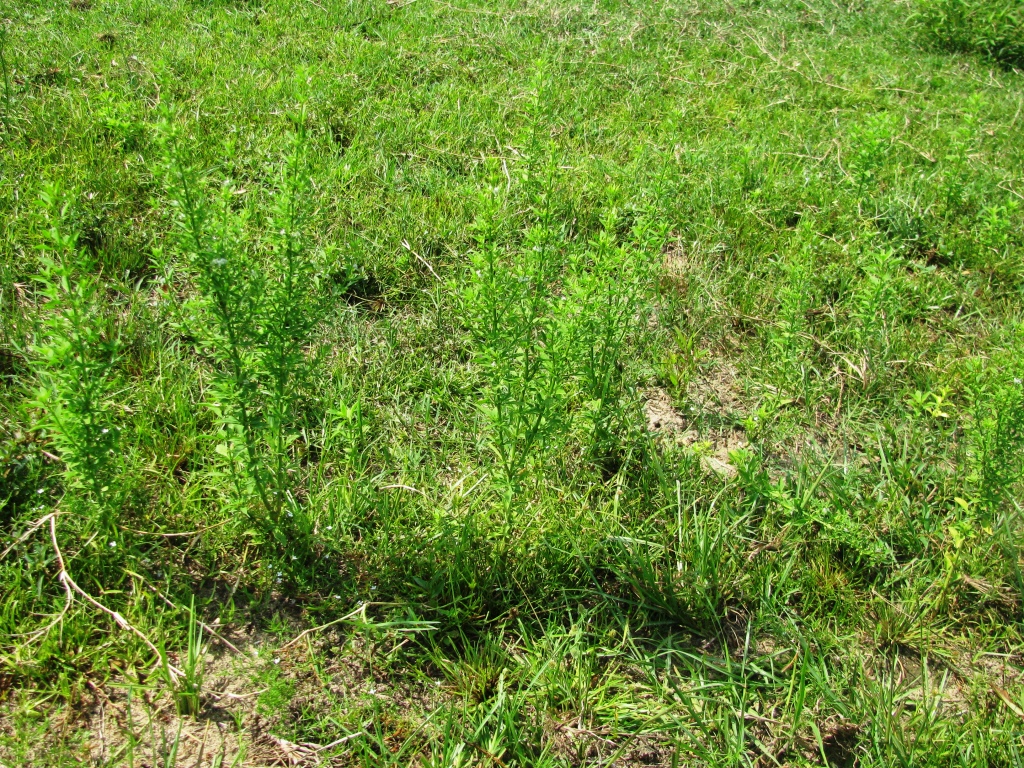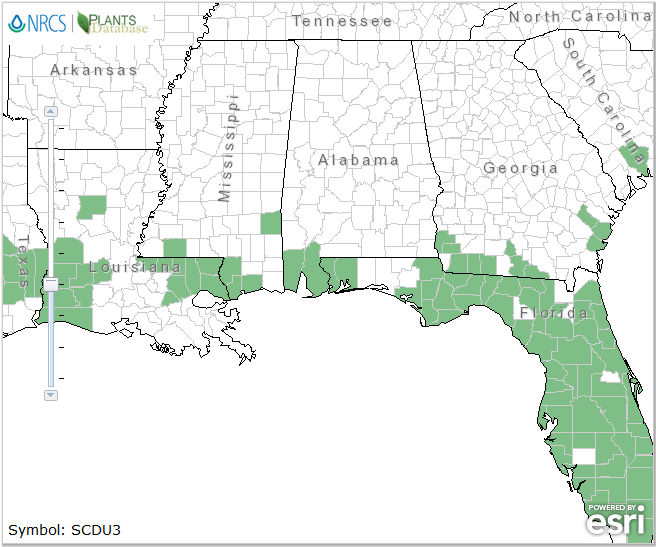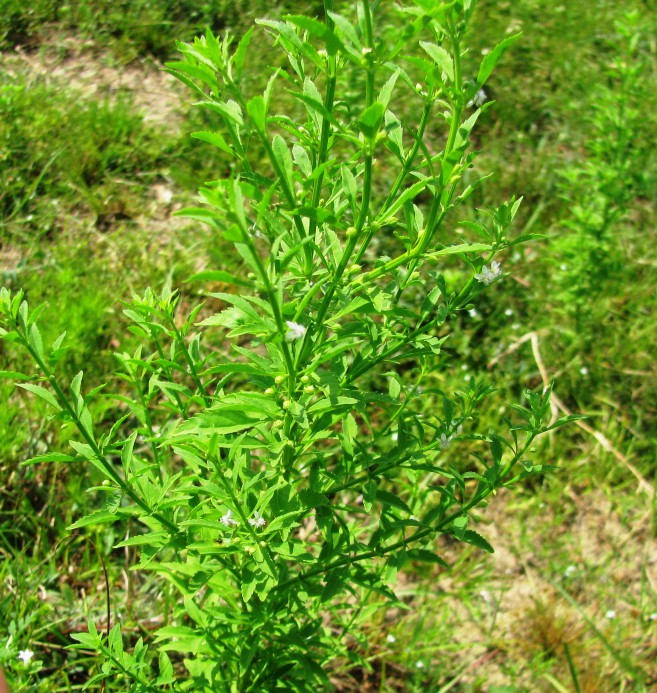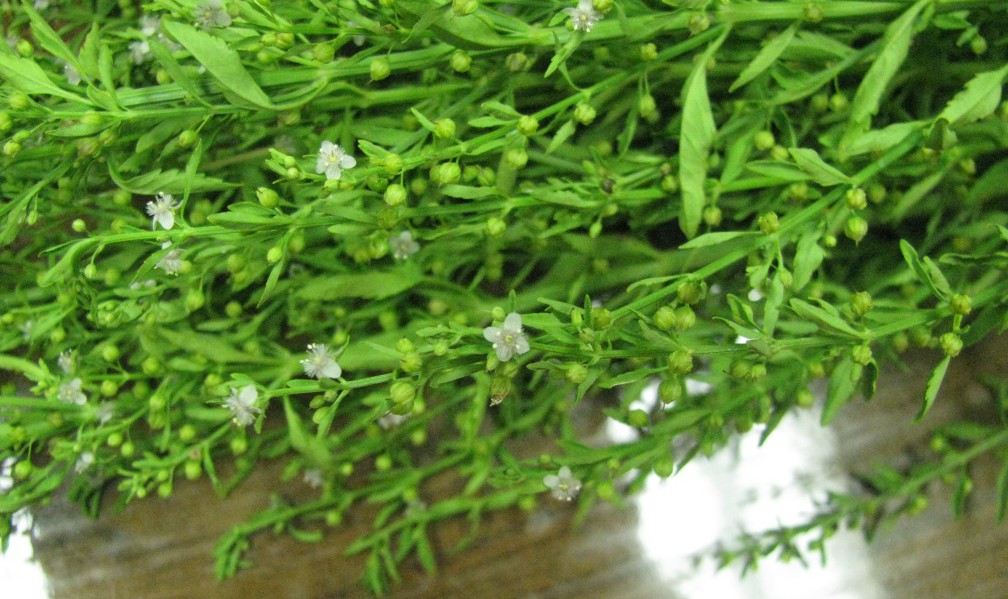Recently on a visit to a local cattleman’s pasture, I identified Goatweed (Scoparia dulcis) for the first time in Holmes County. This weed has been gradually moving west in the Panhandle (Photo 1 below) with recent identifications over the last few years in Jackson and Calhoun counties (Have you seen this Goatweed?).
Goatweed (Scoparia dulcis), also referred to as sweet broom and licorice weed, is a perennial plant that is becoming a serious problem in pastures. A problematic weed in citrus groves for many years, goatweed now appears to be proliferating in improved pastures. The spread of goatweed in Florida can be attributed to a number of things including prolific seed production, movement of seeds through mowing equipment or wildlife, and the tolerance of goatweed to several herbicides utilized in pastures. Goatweed is particularly dense in areas that have been overgrazed, or previously harvested for sod.
Leaves are light green, serrated and approximately 1.5 inches long by 1 inch wide (Photo 2). As the plants mature, leaves become linear with or without serrations. Leaves and stems contain small glands that emit an unpleasant odor when crushed. Stems are usually smooth, but sometimes have soft, fine hairs, and become woody with age. Flowers are white, about 3 to 5 mm long and borne in the leaf axils (photo 3).
Control
Goatweed is relatively tolerant to many of the herbicides utilized in pastures compared to other weed species. In bahiagrass pastures, 4 pints/acre of 2,4-D is needed for optimum control. In bermudagrass and stargrass, metsulfuron (MSM60, and other brand names) at 0.3 oz/acre plus 2 pints/acre 2,4-D provides optimum control of goatweed. The only option for control of goatweed in limpograss (Hemathria) is 0.3 oz/acre of metsulfuron. Repeated mowing does not control goatweed, and it is more difficult to control with herbicides, if its stem has become woody. Although triclopyr (Remedy, others) and PasturegardHL® provide good control of most woody species in pastures, these herbicides are not particularly effective on goatweed. The best herbicide option for goatweed control is 4 pints/acre of 2,4-D amine. However, if this rate of 2,4-D is to be applied to limpograss, only apply it during cool periods of the year (December through April). While proper pasture management can go a long way in controlling this weed, herbicides with the prescribed amounts of 2,4-D will optimize goatweed control in most improved pastures.
For more information contact your UF/IFAS Extension Agent or download:
Goatweed Biology and Control
- Wild Turkey Biology and Habitat Management - March 20, 2020
- Pond Weed Control – Common Salvinia - October 11, 2019
- Renovating Centipede Grass Infested Pastures - April 26, 2019




